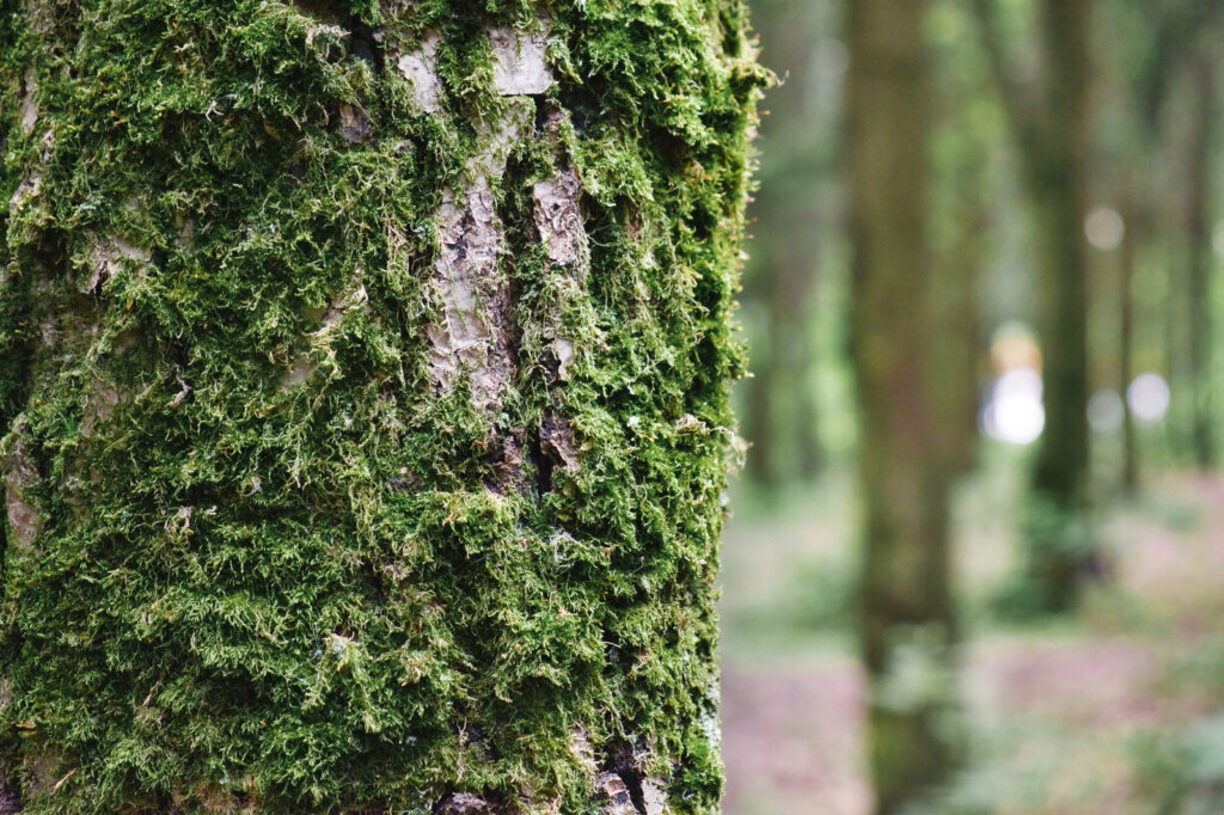Moss, a ubiquitous sight in our woodlands, can cast an unkempt shadow over the beauty of our trees. While it is often seen as a harmless adornment, persistent moss growth can compromise tree health, leading to stunted growth, reduced nutrient uptake, and increased susceptibility to pests and diseases.

Image: www.pinterest.com
Recognizing the detrimental effects of excessive moss, arborists and homeowners alike seek effective means to combat this verdant menace. This comprehensive guide will delve deep into the strategies for eradicating moss from trees, empowering you to restore the vitality and beauty of your arboreal companions.
Understanding Moss and Its Impact on Trees
Moss, a non-vascular plant, flourishes in humid, shaded environments. As it thrives on trees, it creates a dense, interwoven mat that hinders essential sunlight from reaching the tree’s leaves. This deprivation disrupts photosynthesis, the process by which trees produce energy, leading to stunted growth and diminished vitality.
Furthermore, moss accumulation acts as a sponge, retaining moisture and blocking essential nutrient absorption. The tree’s ability to extract nourishment from the soil is compromised, further exacerbating its health issues. Additionally, the damp conditions created by moss provide an ideal breeding ground for harmful pests and pathogens.
Proven Techniques for Moss Removal
1. Tree Cleaning with Pressure Washer:
Pressure washing is an efficient method for dislodging loose moss growth. Employ a pressure washer with a wide-angle nozzle set to a moderate pressure, ensuring not to damage the tree’s bark. Avoid using high pressure, as this can strip away the bark and harm the tree.

Image: chicagolandgardening.com
2. Copper Sulfate Treatment:
Copper sulfate is a potent mossicide commonly used in arboriculture. It should be applied judiciously, as excessive use can harm beneficial organisms. Always follow the manufacturer’s instructions and safety precautions when using copper sulfate.
3. Moss Removal with Bleach:
Bleach, a highly effective moss killer, should be handled with utmost care. Dilute the bleach solution (one part bleach to ten parts water) and apply it directly to the moss using a brush or sprayer. Avoid contact with soil, as bleach can be detrimental to its microbial life.
4. Manual Removal:
For small areas of moss growth, manual removal can be an effective solution. Use a stiff brush to gently scrub away the moss, taking care not to damage the tree’s bark. Follow up by raking up the loose moss and disposing of it properly.
Expert Advice and Practical Tips
Arborist John Smith, known for his extensive knowledge in tree care, offers valuable insights:
“Moss removal should be done with caution, prioritizing tree health. Always test the chosen method on an inconspicuous area first to assess its impact on the tree.”
“After moss removal, foster healthy tree growth by providing adequate sunlight, water, and nutrients. Regularly inspect your trees for signs of disease and take prompt action if needed.”
Actionable Tips:
- Identify the underlying cause of moss growth, such as excessive shade or moisture, and address it to prevent recurrence.
- Avoid heavy fertilizer application, as it can promote moss growth.
- Incorporating lime into the soil can help reduce moss growth by raising the pH level.
How To Get Rid Of Moss In Trees
Conclusion
Restoring the health and beauty of moss-covered trees is a rewarding endeavor that requires a thoughtful and responsible approach. By carefully implementing the techniques outlined in this guide, you can effectively eliminate moss while nurturing the long-term well-being of your trees. Remember to seek professional advice from a certified arborist for complex or extensive moss infestations.
As you witness your trees regain their vigor and vitality, take pride in knowing that you have played a vital role in ensuring their continued presence in our natural and urban landscapes for generations to come.







